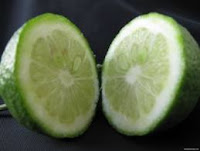Fine-leaved water dropwort is more commonly known as Water Fennel in Britain Europe and western Asia .
Water fennel is a member of the Apiaceae or Umbelliferae family of plants, making it a relative of the carrot, fennel, dill, anise, caraway, angelica, (its odour is similar to that of water fennel), cowparsley, celery and many other plants which have flower heads which are clusters or umbels of flowers, and have fine, feathery leaves. Flowers of this plant have five white petals. In the British Isles the plant flowers from July through to September.
 The leaves are poisonous to grazing cattle as it can cause paralysis, and it is said to contain myristicin which is supposedly a psychotropic substance. However the dried leaves lose this dangerous property. The oil from the fruit it produces only every alternate year contains phellandrine and is used for chronic chest infections such as bronchitis, lung problems, such as consumption, and asthma. This has expectorant properties so can clear phlegm and catarrh.
The leaves are poisonous to grazing cattle as it can cause paralysis, and it is said to contain myristicin which is supposedly a psychotropic substance. However the dried leaves lose this dangerous property. The oil from the fruit it produces only every alternate year contains phellandrine and is used for chronic chest infections such as bronchitis, lung problems, such as consumption, and asthma. This has expectorant properties so can clear phlegm and catarrh. You can easily overdose on the fruit of this plant although it is not as dangerous as the consumption of Oenanthe crocata, a close relative. The symptoms will be intoxication, vertigo and other possible narcotic effects.
In the past the herb was used for intermittent fevers, such as malaria, and as a diaphoretic to promote sweat and so lower the temperature of the body during a fever. Externally the plant was also used to cure ulcers on the skin and internally was taken as a remedy for dyspepsia.
 The roots were sometimes pulverized and used to treat piles but if the root is ingested by accident it could prove fatal.
The roots were sometimes pulverized and used to treat piles but if the root is ingested by accident it could prove fatal. This post is for information only as the plant is considered too dangerous for use and should only be used as directed by qualified (and trusted) homoeopathists.

















































